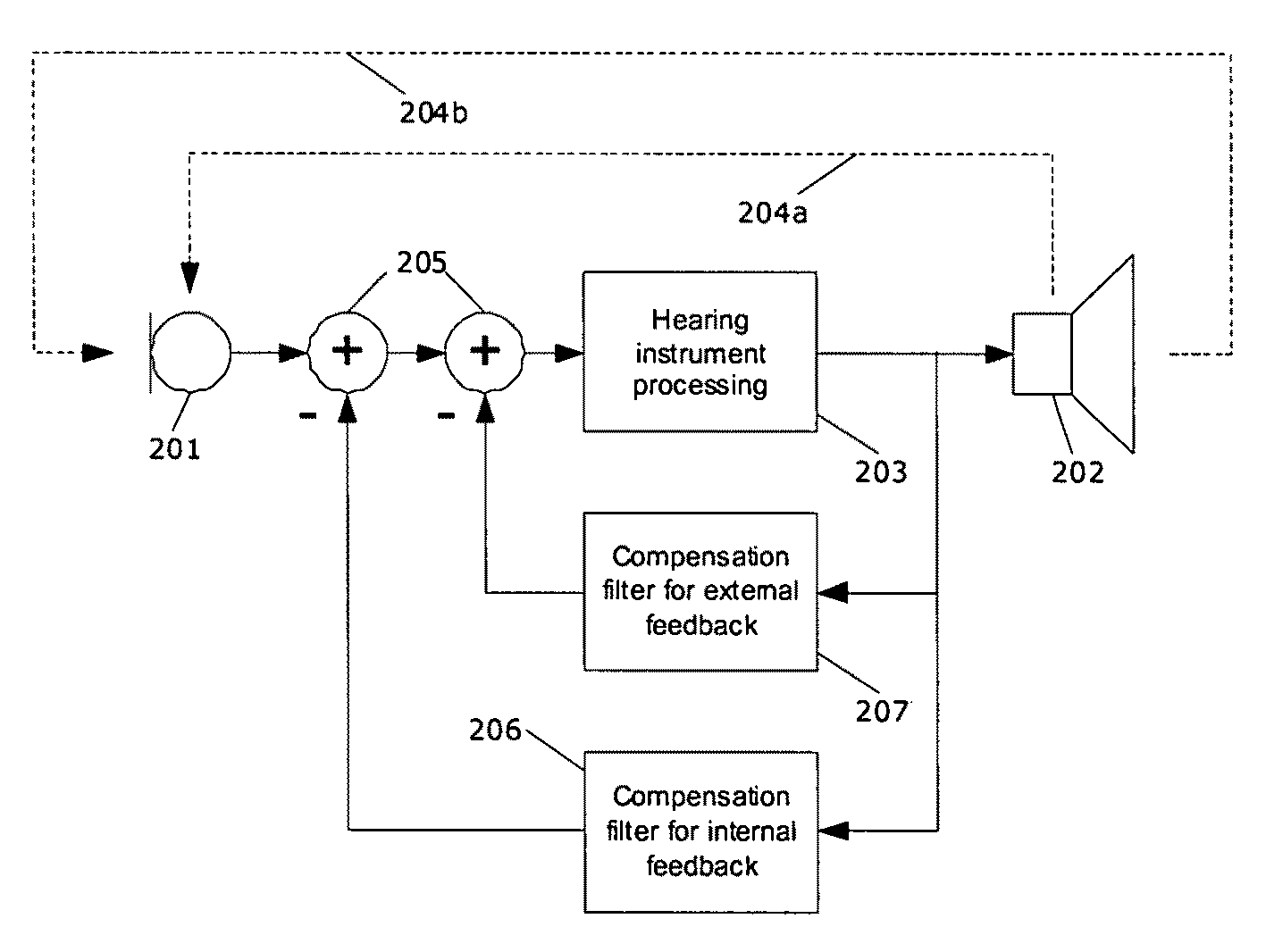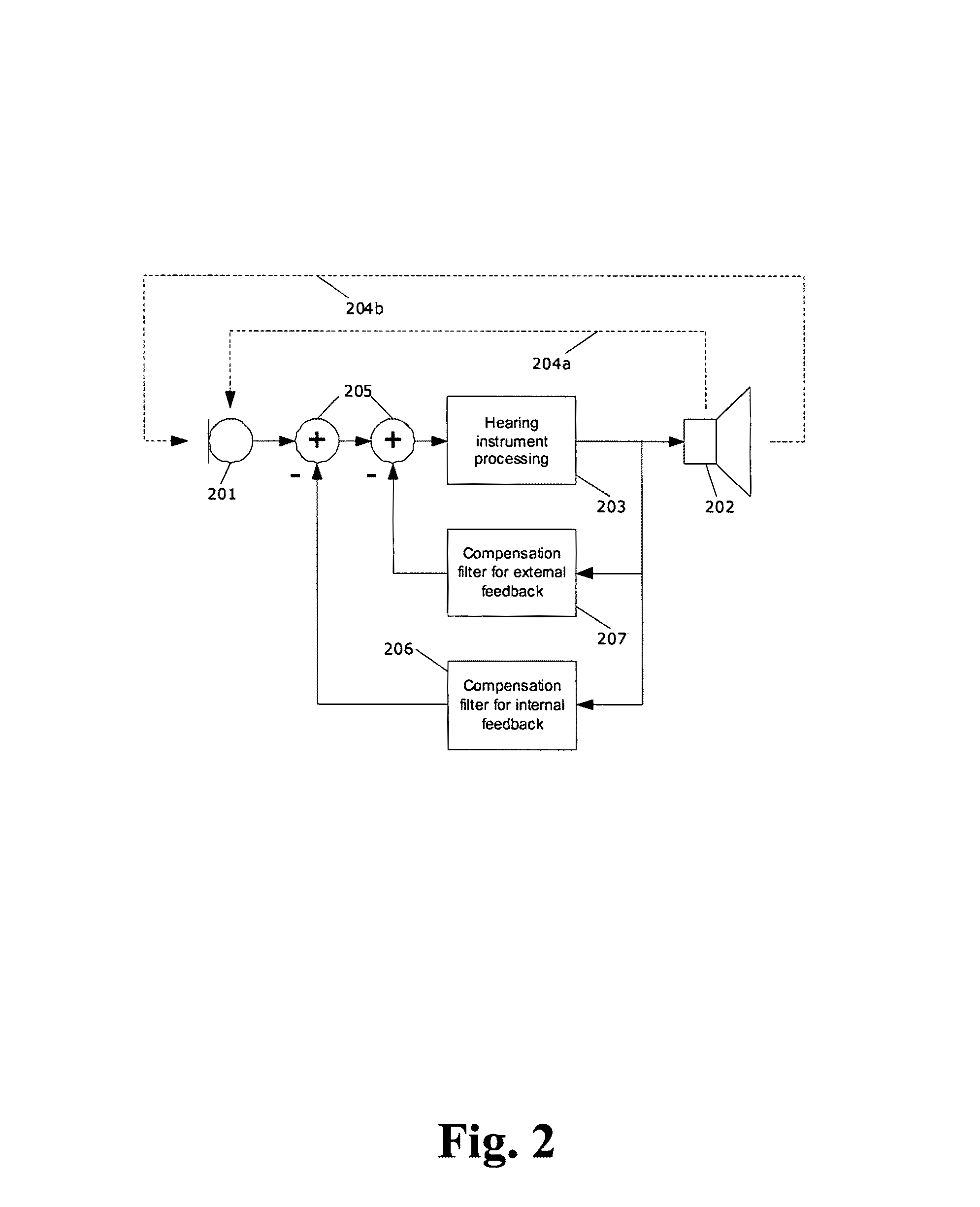Hearing aid with feedback cancellation
a hearing aid and feedback technology, applied in the field of hearing aids, can solve the problems of acoustic feedback and less robustness of hearing aids
- Summary
- Abstract
- Description
- Claims
- Application Information
AI Technical Summary
Benefits of technology
Problems solved by technology
Method used
Image
Examples
Embodiment Construction
A block-diagram of a typical (prior-art) hearing aid with a feedback compensation filter 106 is shown in FIG. 1. The hearing aid comprises a microphone 101 for receiving incoming sound and converting it into an audio signal. A receiver 102 converts output from the hearing instrument processor 103 into output sound, which is supposed to be modified to compensate for a users hearing impairment. Thus, the hearing instrument processor 103 comprises elements such as amplifiers, compressors and noise reduction systems etc.
A feedback path 104 is shown as a dashed line between the receiver 102 and the microphone 101. This feedback path makes it possible for the microphone 101 to pick up sound from the receiver 102 which may lead to well known feedback problems, such as whistling.
The (frequency dependent) gain response (or transfer function) H(ω) of the hearing aid (without feedback compensation) is given by:
H(ω)=A(ω)1-F(ω)A(ω)(1)
where ω represents (angular) frequency, F(ω) is the gain ...
PUM
 Login to View More
Login to View More Abstract
Description
Claims
Application Information
 Login to View More
Login to View More - R&D
- Intellectual Property
- Life Sciences
- Materials
- Tech Scout
- Unparalleled Data Quality
- Higher Quality Content
- 60% Fewer Hallucinations
Browse by: Latest US Patents, China's latest patents, Technical Efficacy Thesaurus, Application Domain, Technology Topic, Popular Technical Reports.
© 2025 PatSnap. All rights reserved.Legal|Privacy policy|Modern Slavery Act Transparency Statement|Sitemap|About US| Contact US: help@patsnap.com



